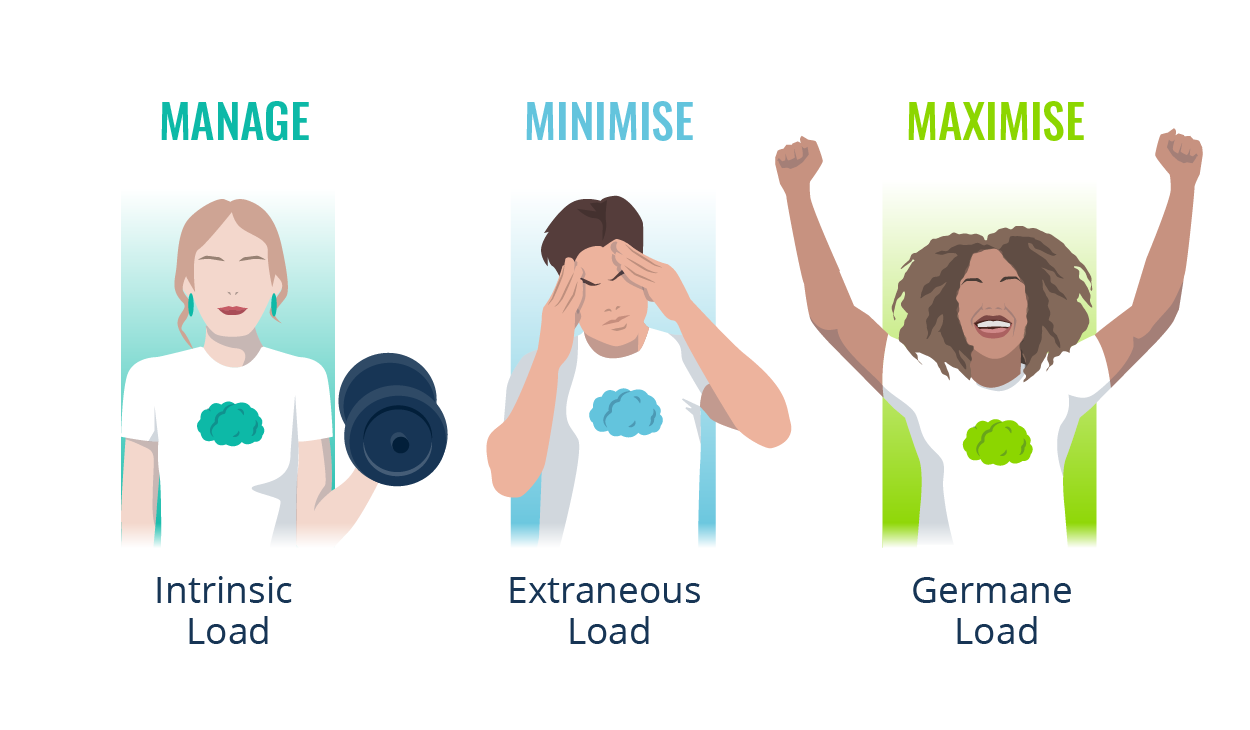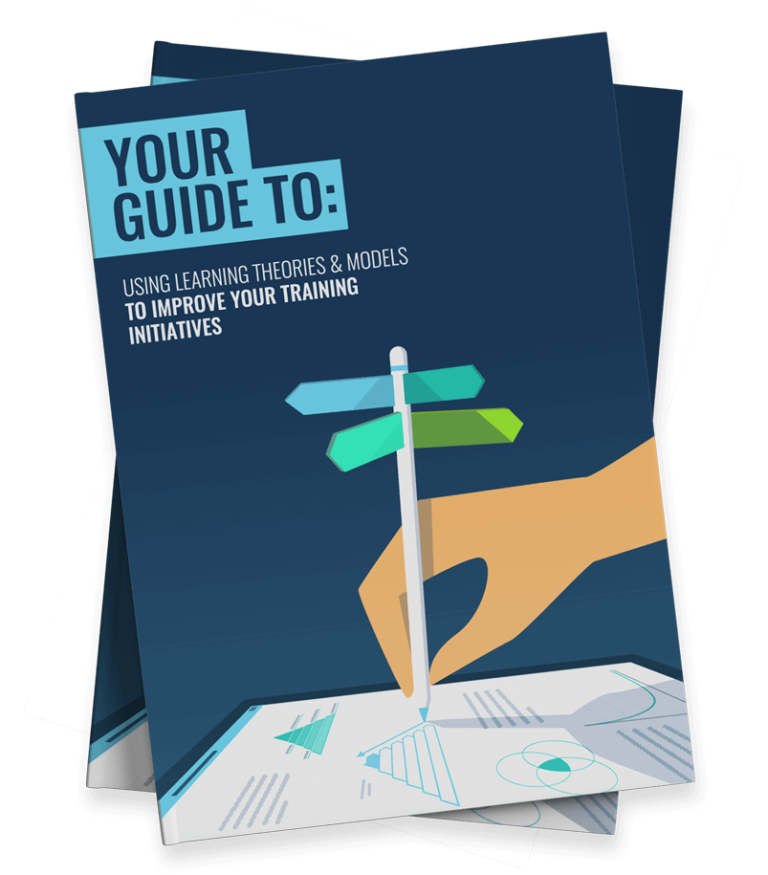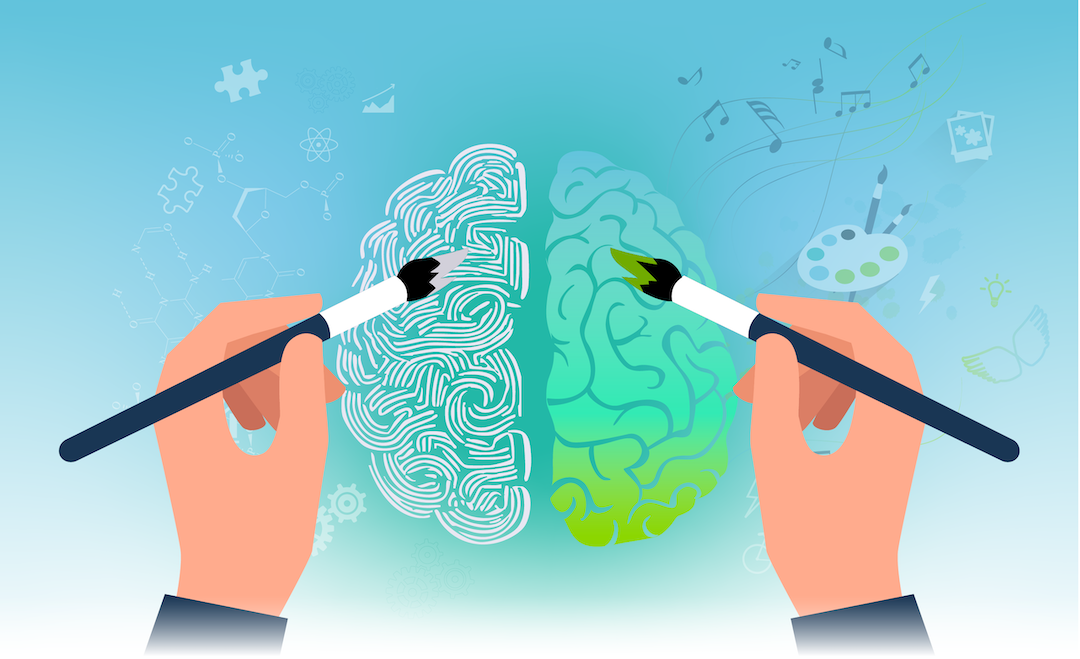
Have you ever felt overwhelmed after a study session, or when trying to keep up with a training instructor? You’re not alone. Cognitive learning theory helps us to understand why our brains sometimes feel like they’re about to burst (metaphorically, of course).
Just as you become less effective when multitasking, your brain processes information less efficiently when it’s overloaded. Cognitive load theory explains why this happens and offers strategies to counteract it.
British researcher Dylan Wiliam once called cognitive load theory ‘the single most important thing for teachers to know’. And guess what. If teachers need to know about it, then so do instructors, coaches, mentors, and learning professionals of all stripes.
In this article, we’ll explore cognitive learning theory’s key concepts, its robust evidence base, and the three different types of cognitive load. To wrap things up, we’ll offer practical tips for reducing the strain on your mental processes. Ready to load up your knowledge?
What is Cognitive Load Theory?
Cognitive load theory is a psychological theory focused on how the human brain processes information and how this affects learning. It suggests that our cognitive resources are limited. This is particularly true when it comes to our working memory.
Put simply, the theory suggests that our brains can only handle so much information at once. Yes, our brains are powerful. After all, they can store 2.5 million gigabytes of information. But their processing powers are more limited.
When we exceed this capacity, it can impede our ability to effectively acquire and retain knowledge. This highlights the importance of designing learning experiences that don’t overburden our cognitive functions or tax our working memories.
That would be like trying to fill a glass that’s already overflowing.
The Origin of Cognitive Load Theory
So, where did the idea of cognitive load come from?
One good starting point is the work of cognitive scientist George Miller. He’s perhaps best known for the paper, ‘The Magical Number Seven, Plus or Minus Two: Some Limits on Our Capacity for Processing Information’, published in 1956.
The name of the study gives you a good idea of its relevance to this topic. Miller explored the limitations of human memory, suggesting that people can typically hold seven pieces of information (give or take a couple) in their short-term memory at any one time.
This concept is also known as Miller’s Law. Want to test it? Create a mental list of random items and see how many you can accurately recall without referring back.
However, it’s John Sweller, an Australian educational psychologist, who is credited with formalising cognitive load theory. In his 1988 paper, he explored the cognitive demands of problem-solving.
He found that this complex task required a significant amount of mental processing. After all, it typically requires creating new mental models (or what Jean Piaget would call ‘schemas’). With this in mind, he proposed a variety of principles aimed at reducing cognitive load.
Since these initial breakthroughs, researchers like Paul Kirschner have examined the implications of cognitive load theory for classroom instruction, while Richard Clark has explored its relationship to instructional technology.
Types of Cognitive Load
According to cognitive load theory, not all cognitive burdens are equal. In his work, John Sweller outlined three distinct types of cognitive load. Each one influences how learners process and retain information.

- Intrinsic Load: This refers to the inherent complexity of the learning material itself. After all, some topics are more challenging than others. This could be due to the topic’s abstract nature or the overwhelming amount of information to convey. For example, it’s easier to learn how to bake brownies than it is to make a soufflé.
- Extraneous Load: This load type arises from irrelevant or distracting elements within the learning environment. It’s often a consequence of ineffective instructional design. For instance, consider a cluttered presentation brimming with text, distracting images, and (gulp) star swipe animations.
- Germane Load: This is the mentally taxing effort that’s required to forge connections between new information and existing knowledge. It’s easier to onboard information when we can link it to familiar concepts. For instance, attempting to learn about quantum mechanics without a solid understanding of physics would be a fool’s errand.
Designing effective learning experiences requires managing intrinsic load, minimising extraneous load, and maximising germane load. By doing this, we can create learning environments that are more engaging, effective, and less mentally taxing for learners.
What Role Does Working Memory Play?
Our working memory is a limited-capacity system. It stores small amounts of information for a short amount of time. You can think of it as anything you are consciously aware of at any given moment.
When capacity is reached, storing and processing new information becomes increasingly challenging. Once all the parking spaces are full, you’ll need to look elsewhere.
These limits can also be understood in terms of intrinsic, extraneous, and germane load. For example, if your learning material is overly complex, it can create an excessively high intrinsic load and overwhelm our working memory.
Likewise, if our working memory is burdened by irrelevant information or distractions, it will have less capacity and processing power to handle the crucial details.
Finally, if your working memory can’t successfully connect new information to existing knowledge, then it’s unlikely to stick. Worse still, the experience will be mentally taxing, hindering future learning efforts.
The Effects of Heavy Cognitive Load
Imagine a scenario where your intrinsic and extraneous loads are elevated, while your germane load is low. It hurts just to think about it! This cognitive imbalance can have several detrimental effects on learning and overall cognitive function.
- Reduced Comprehension: As we’ve seen, when our cognitive resources are overloaded, we struggle to process and understand information effectively. This results in poor learning outcomes.
- Increased Frustration & Stress: The mental strain associated with heavy cognitive load can be difficult to manage. Some learners may find this frustrating or stressful and may even experience a decline in motivation.
- Increased Stereotyping: A heavy cognitive load may force us to rely on subconscious processes and schemas, such as basic pattern recognition. This can inadvertently lead to unhelpful stereotypical associations.
- Decreased Retention: Information acquired under conditions of high cognitive load is less likely to be retained. In other words, our working memory is less likely to transfer it to our long-term memory.
- Impaired Performance: Reducing comprehension and retention will naturally have negative consequences. Without access to the right information, our ability to think critically and solve problems will be impaired.
As you can see, heavy levels of cognitive load have tangible real-world implications. As such, it’s important to create learning environments that minimise intrinsic and extraneous load while maximising germane load. We’ll explore how this can be achieved next.
Managing Learners Cognitive Load
1. Reducing Intrinsic Load
Ultimately, intrinsic load is determined by the inherent complexity of your learning material. As such, there are limits to what you can control or modify. Thankfully, however, there are some strategies you can use to mitigate its impact.
- Chunk it Up: Here at Growth Engineering, we’re big advocates for microlearning experiences. We recommend dividing complex information up into smaller, more digestible chunks. As a result, your learners will be able to concentrate on the most crucial aspects, reducing cognitive overload.
- Use Visual Aids: They say a picture paints a thousand words. With this in mind, why not use diagrams, charts, or images to represent complex concepts visually? By empowering your learners to visualise information, you’ll enhance their ability to process and understand it.
- Make it Simple: Where possible, use analogies and metaphors to explain key concepts. This enables learners to relate complex ideas to familiar examples or previous experiences. This helps, as we’ve seen that connecting new information to existing knowledge drives better understanding.
- Add Context: While metaphors and analogies can be useful, strive to go beyond them and explain the relevance of the material to your learners’ lives. This will help your audience to understand the value of the material and can even boost their motivation levels.
- Get Hands On: Experiential learning can be particularly effective. Offer your learners opportunities to practise applying what they have learned. This gives them a chance to solidify their understanding, whilst simultaneously reducing the cognitive demands of learning.
2. Reducing Extraneous Load

Extraneous load is created when learning environments are filled with irrelevant or distracting elements. To combat this successfully, we’ll need to create a winning learning environment. Here are our top tips to get started.
- Clear Instructions: Every good learning experience starts with clearly stated learning objectives, expectations, and assessment criteria. This guidance supports your learners in focusing their attention on the most relevant tasks, preventing wasted time and energy.
- Minimise Distractions: Ensure your learning environment is free from distractions. If you’re a learning professional, consider offering your audience dedicated study time. If you’re a learner, enhance your focus by turning off your notifications and investing in noise-cancelling headphones.
- Avoid Redundancy: While it may seem obvious, it’s worth emphasising: avoid unnecessary repetition. Summarising key points is essential, but redundancy can increase extraneous load and make it difficult for your learners to focus on essential information.
- Offer Support: Learning’s better when we do it together. We recommend cultivating a social learning environment where your learners can share their knowledge. Implementing a mentoring or coaching programme can also facilitate the flow of information throughout your organisation.
- Be Positive: You should also seek to foster a positive and supportive learning environment. Encourage a growth mindset and make yourself readily available for questions, help, and general guidance. You’ll be amazed with the impact this can have on learner motivation.
3. Maximising Germane Load
Unlike intrinsic and extraneous load, which we aim to minimise, we’ll focus on maximising germane load. This is what aids us in forging meaningful connections between new information and existing knowledge. Here are some tips to get you started.
- Active Prior Knowledge: Before learning begins in earnest, start by activating your learners’ existing knowledge on the topic. This can typically be achieved through encouraging brainstorming, summarising, or asking relevant questions. As a result, you’ll make it easier for learners to build the right connections.
- Get Reflective: Allow your learners ample time and space to connect different topics. If you rush through your learning material there’ll be no opportunity for reflection. This matters, as it will hinder your learners’ overall understanding and comprehension.
- Encourage Elaboration: One way to encourage reflection amongst your learners is to ask them to elaborate on a topic. For example, you could ask them to explain new information in their own words, provide relevant examples, or to connect it to previously covered material.
- Scenario-Based Learning: Providing opportunities for scenario-based learning helps learners to see the relevance of the material. In turn, they’ll be able to make connections between information and their own experiences. This can be a highly-effective learning approach.
- Offer Feedback: Feedback is the breakfast of champions. Providing timely and specific suggestions can help your learners to strengthen their understanding. Focus your feedback on supporting learners’ efforts to connect concepts and identify areas for improvement.
Reducing Cognitive Load Through Technology

As we’ve seen, there are a variety of different ways to adjust instruction in line with cognitive load theory. But technology also has a role to play. Indeed, studies show that when technology is used to reduce cognitive load, there are ‘beneficial impacts on learning’, our emotions, and self-perception.
For instance, many learning technology solutions, such as learning management systems and learning apps, are set up to avoid cognitive overload. Most systems support learning pathways and curricula that break down complex information into manageable chunks.
Interactive elements such as simulations, games, and quizzes can enhance the online learning experience, encouraging learners to actively process information. Growth Engineering LMS, for example, utilises a range of game mechanics to boost motivation.
The right solutions will also automate repetitive tasks, freeing up learners’ cognitive resources to focus on more complex and meaningful learning activities.
Criticisms of Cognitive Load Theory
As with any learning theory, cognitive load theory has its critics. While many agree with its core principles, there are notable challenges when it comes to measuring cognitive load and in other areas.
Measuring any cognitive process is always going to be a challenge. While various methods do exist, such as think-aloud protocols and physiological measures, they all have their limitations. It’s simply not possible to gather a complete picture of what’s happening inside our heads.
Consequently, we can’t directly measure the impact of reducing intrinsic and extraneous load or increasing germane load. This limits our ability to compare and contrast these different load types to determine their relative effectiveness. As a learning professional, you might understandably be uncertain about where to focus.
What’s more, cognitive learning theory struggles to account for differences in cognitive abilities, learning preferences, and motivation. There are also cultural and contextual factors to keep in mind. What works for one learner might not work for another.
Despite these issues, cognitive load theory remains a valuable framework for understanding and improving learning. Whilst measuring cognitive load is challenging, considering it is a crucial aspect of effective learning experience design.
Final Words
Cognitive load theory provides a valuable and research-backed framework for understanding how the brain processes information. In turn, we can use this knowledge to optimise learning experiences and improve our impact.
When we overburden our brains with complex or irrelevant information and distractions, our cognitive capacity is compromised. Unfortunately, our working memory has a limit, so we need to adjust our instruction accordingly.
Thankfully, there are strategies to counterbalance this and manage your mental workload. Start by chunking information, providing clear learning objectives (and links to previous materials), and offering support to your learners throughout the process.
The simpler you make it, the more your learners will learn. Who would have guessed?
Thank you for reading. Cognitive learning theory is one of many effective and influential learning theories. To get the full breakdown, please download our guidebook, ‘The Learning Theories & Models You Need to Know’.









